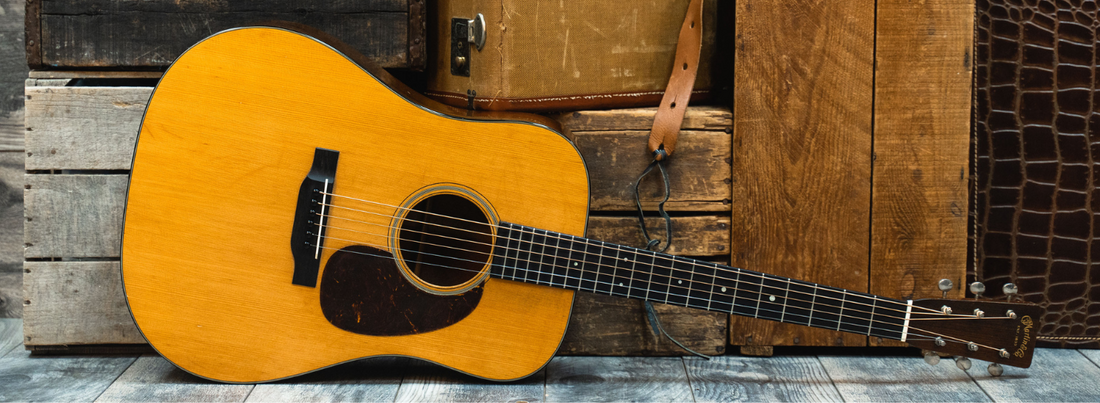It’s hard to think of an acoustic guitar more iconic than a Martin. Martins aren’t bound by genre, or by era, and so to read a list of artists who favored them is like tracing the arc of popular culture, from Hank Williams to Elvis Presley, Elvis to Kurt Cobain. They’ve been on so many album covers and stages that if a kid’s dreaming up the perfect flattop guitar, what they’re probably seeing is a Martin. Any Martin. D-18, D-28, old, new – doesn’t matter. They’ve all got the right sound, the right style.
But ask any acoustic collector what kind they want and chances are the reply comes quick and certain: “A Pre-War Martin.” What they mean is pre-World War II (before 1941 in the U.S.), considered by many the golden age of American acoustic guitar production. Especially for C.F. Martin & Co.: their models from this period routinely push – and often surpass – the $100k mark. Given the increasing rarity of pre-War anything these days, prices are sure to rise and rise and…
As someone who thought he’d never even get to see one of these guitars in the flesh (let alone play one), I was tickled when this 1937 D-18 arrived this week. In fact, everybody here at Garrett Park was pretty stoked to have this one in the shop – and this post is our way of savoring the moment and sharing some of our excitement with you. So please enjoy these pictures, a little Q&A, and a video of GPG’s very own Justin Beall playing this beautiful guitar at the end!
Garrett Park Guitars offers appraisal and consignment services for vintage guitars. We also just love talking classic gear, so if you have an old Martin you’d like to learn more about, please give us a call (410-571-9660) or shoot us an email (info@gpguitars.com).

What makes a pre-War Martin so special?
In short, the build quality. America’s entrance into World War II created a labor and resource scarcity that affected manufacturing, which in turn forced companies like Martin to rethink their processes and designs. Here’s an example: before the War, Martin used scalloped braces in all their instruments, which was time-consuming and required skill (each brace had to be carved by hand) but resulted in a lighter, more resonant instrument. During the war, however, they switched to tapered braces, which were heavier but easier to produce. While this method made sense given the economic squeeze, it produced a different (some would say deader) sounding guitar. Another crucial change was the truss rod: since steel was needed for the war effort, Martin began to use ebony, which is why many post-1941 Martins have (or are especially susceptible to) bent, warped necks.

What makes this pre-War Martin so special?
We could talk about bracing all day, but that’s kind of silly when all you need to do is strum a big ol’ open G on this thing. There’s so much power and sustain, such clarity and balance from bass to treble, that you immediately understand how someone could refer to their pre-War Martin as the Holy Grail. While it’s true that most guitars, especially acoustics, need time to develop their tone to the fullest – and we’re talking decades here – not all guitars from the ‘30s are in such great shape. I mean, have you ever seen a better looking 85-year old?
Here’s Justin taking the D-18 for a test run!

